Donald Trump vs. California: 5 ways the president-elect could challenge state policies
Published in Political News
SACRAMENTO, Calif. — During Donald Trump’s first term and throughout this year’s campaign, California leaders and their policies were often the source of the former president’s rage.
Trump has blasted the state’s rising cost of living, denigrated its support for immigrant communities and railed against its high homelessness rates.
Trump has made direct statements about superseding a California voting law, blocking state environmental regulations and withholding federal funds from disaster victims. With a second term, Trump could act on some of those threats once he takes office January 20.
“Kamala Harris and the radical Democrats have destroyed the great state of California,” Trump said during a rally in Southern California in the final month of the campaign against the Democratic presidential nomination.
He called California “a paradise lost.”
While some of Trump’s efforts to reshape California may be beyond his authority, he could revoke, or significantly impact, other Golden State priorities, according to experts. Much of which will depend on to what extent the legislative branch, now under GOP control, follows Trump’s lead and how California responds in the courts.
Again positioning himself as one of Democrat’s chief opponents to the president-elect, Gov. Gavin Newsom said the state needed to “Trump-proof” California shortly after it was clear the GOP leader was returning to the White House.
First, he called for a special session to shore up the state’s legal resources. Then, Newsom traveled to Washington D.C. to meet with officials from the Biden administration and California’s congressional delegation, where he addressed several of the former president’s threats.
“California is continuing our work to secure additional tools and resources to improve access to health care, clean air and water, and secure critical funding to support communities recovering from disasters,” Newsom said in a statement following his visit.
The governor said he was taking advantage of the next two months to secure protections for California, while a friendly administration still occupied the White House..
Here’s what to expect from the second Trump administration:
Voter ID requirement
Shortly after Trump won a second term, he took to social media to criticize Newsom and California policies. In a post on the president-elect’s platform Truth Social, the president-elect said proof of citizenship and voter ID should be required in order to vote.
His comments came in response to legislation Newsom signed earlier this year, banning local communities from adopting ordinances requiring voters to show identification before casting a ballot. The legislation came after voters in Huntington Beach passed a ballot measure requiring voter ID, which was also the subject of litigation from the California Department of Justice.
Just as state leaders imposed election-related legislation over local governments, the federal government under Trump could take congressional action over the issue of voter IDs, said Johnathan Diaz, the director of voting advocacy and partnerships at the Campaign Legal Center.
Trump couldn’t “just wave a magic wand and preempt state laws he doesn’t like,” Diaz said. Federal legislation requiring voters to show proof of citizenship to register to vote would need approval from the House and a filibuster-proof majority in the Senate, Diaz said.Sixty votes would be needed to limit debate, and Republicans will control 53 Senate seats next year.
In September, Republicans attempted to pass an election security measure as part of a government funding plan. Republicans scrapped the effort to ban non-citizens from voting, which is already illegal, to avoid a government shutdown months before the presidential election.
In the event Congress does pass a voter ID law, Diaz said, the federal law would supersede state law for federal elections. He noted that California could create a system with two ballots, one for federal elections and another for state and local elections, to meet federal requirements set out in this scenario.
Arizona already has a proof-of-citizenship voting law and as a result has two groups of voters: those with full ballot access and federal-only voters.
Diaz said voter ID laws tend to disproportionately impact younger voters, people of color and homeless voters because some in these groups don’t have easy access to documentation that proves citizenship.
The Trump transition team did not return requests for comment.
Federal disaster aid
On multiple occasions this year, the president-elect has made threats to withhold federal aid to California intended to help the state recover from wildfires.
Recently, Trump told Coachella-rallygoers that if Newsom doesn’t sign onto the president-elect’s water-use plan, “We’re not giving you any of that fire money we send you all the time for the forest fires.”
Brian Rice, the California Professional Firefighters president, is taking Trump’s threats seriously.
In Rice’s nearly 40 years working in emergency services, “never has an elected official, Republican or Democrat, made disaster relief response and funding a subject of political bargaining.”
Trump threatened to withhold aid from California while he was president, according to E&E News. Trump allegedly believed that victims of the a 2018 wildfire in California were Democrats who did not vote for him, and thus should not receive federal assistance. Trump eventually did approve the funding.
Rice expressed concern that Trump’s antagonistic relationship with California leaders could result in delayed or denied disaster relief as the same time the wildfire season is growing longer and more intense due to changes in the state’s climate.
Trump has broken norms in the past and withholding federal aid from California could be another political boundary the president-elect pushes, said Michael Wara, director of the climate and energy policy program at Stanford University’s Woods Institute for the Environment.
Furthermore, “Trump and his allies have signaled a desire to do major surgery, at a minimum, to the way that FEMA works in ways that could significantly and negatively affect disaster recovery,” Wara said.
Those negative impacts could extend to hurricanes, floods and other natural disasters, Wara said.
Not all federal disaster aid will require approval from Trump in 2025. Some federal disaster-related funding only requires approval from FEMA regional administrators. Additionally, other agencies such as the Small Business Administration and the U.S. Department of Agriculture can distribute disaster relief. Those disaster declarations have distinct processes for approval separate from the president.
Other times, the U.S. government declines to authorize a federal disaster declaration if, say, the damage is not significant enough, said Wara. That might be reasonable based on the disaster circumstance.
“But picking winners and losers is not something that was the intention of the authorizing legislation,” Wara said, “and it’s definitely not been the norm for presidents until Trump.”
Clean air regulations
Perhaps Trump’s biggest California target includes a series of environmental rules that are before the U.S. Environmental Protection Agency, awaiting approval from the federal government.
California has the unique ability to set its own vehicle emission standards. The state has proposed more stringent climate rules as a means of protecting Californian’s air quality and minimizing the amount of greenhouse gasses the state emits. Under a federal agreement, those standards must be approved by the EPA.
Earlier this year, Trump’s campaign told Politico that the former president would revoke any waiver that outlawed gasoline-powered cars. The Trump transition team did not respond to a list of questions.
California has one such standard that requires all cars and trucks sold in California by 2035 must be zero-emission vehicles.
If Trump follows through with campaign promises to revoke these waivers after EPA approves them, California would likely sue over the federal administration’s action, said Ethan Elkind, the director of the climate program at Berkeley Law’s Center for Law, Energy and the Environment.
That’s how the situation played out during Trump’s first term when he revoked a California rule that imposed stricter carbon pollution limits on vehicles than the federal standard, Elkind said. California sued over Trump’s action and litigation was still ongoing by the time Joe Biden won the 2020 election. Shortly after, Biden reinstated the California limit.
“It became an unsettled legal question,” Elkind said. “But there’s no question that’s where California is very vulnerable.”
Trump nominated former New York Rep. Lee Zeldin to head up the EPA. The Trump loyalist said under his leadership the environment agency would revitalize the auto industry and restore U.S. energy dominance.
“Those requirements for automakers to sell zero-emission vehicles have absolutely been central to the success of the electric vehicle industry in California,” Elkind said.
He noted those requirements have been particularly helpful to the electric car company Tesla, whose CEO, Elon Musk, is a close ally of Trump.
Elkind said the Trump administration can do a lot of damage for the relatively new market of zero-emission vehicles. These changes to regulations, which the automotive industry uses to make long-term manufacturing decisions, will create further uncertainty for vehicle makers, Elkind said.
California’s effort to decarbonize the electric, transportation, industrial sectors, he said, is at risk under Trump.
Not all California officials are on board with all the environmental waivers.
Rep. Jay Obernolte, R-Big Bear Lake, has been critical of one of the California Air Resources Board’s rules in particular, which would require all new locomotives operating in California to be zero emissions by 2030. If the EPA approves the rule, it would additionally ban older trains that release more greenhouse gases from operating in the state.
“While I share the broader goal of reducing emissions, CARB’s misguided rule would not accomplish it,” said Obernolte in a statement released earlier this year. “Instead, it would have a disastrous impact on interstate commerce, increasing the cost of rail transport, reducing jobs, and raising prices for Californians.”
The Trump transition team did not respond to a request for comment.
Abortion restrictions
On the campaign trail, Trump repeatedly said he would oppose efforts to implement a national abortion ban.
But many reproductive rights advocates are skeptical, particularly as the incoming president has surrounded himself with a number of people who do support such an effort. He has proudly taken credit for putting justices on the U.S. Supreme Court who helped overturn the 50-year precedent of Roe v. Wade.
For Melissa Goodman, executive director of the UCLA Center on Reproductive Health, Law and Policy, that’s a warning sign of things to come.
“We should believe what he and his allies have said they want to do and be concerned about them,” Goodman told The Bee in a recent interview.
And should Trump decide to target reproductive rights in blue states like California, she said, “I think that the Trump administration can do a lot of harm in California with respect to abortion access.”
That’s even without a congressional restriction or ban on abortion, which could be a tall order for Congress as long as the Senate filibuster is maintained.
For instance, Trump could go after access to abortion pills — such as mifepristone and misoprostol — which Goodman said are responsible for about a third of the abortions carried out nationwide.
The Trump transition team did not respond to a request for comment.
A Trump Food and Drug Administration could change its policy regarding those medications to make it more difficult to obtain them.
Mifepristone, in particular, is the subject of ongoing litigation, Goodman said, and that is likely to intensify.
“There’s going to be lots of court fights about mifepristone,” she said.
Another avenue of attack that Trump could pursue, even in California, is to change the rules regarding telehealth access for abortion medications. That means doctors could potentially be prohibited from prescribing such medications over the internet.
Then there’s the Comstock Act.
A lot was made of this 1873 law that bans the mailing of “obscene” materials — including pornography, contraceptives and, possibly, abortion pills — during the 2024 presidential campaign. And while Trump has said he would not enforce that law, Goodman said it nevertheless could be a tool used to prevent abortions.
“I believe that there are a number of people in Trump’s circle, and unfortunately some Supreme Court Justices, who have expressed interest in this theory,” Goodman said. Justices Clarence Thomas and Samuel Alito invoked the Comstock Act during during oral arguments in the legal challenge against mifepristone.
Trump also could potentially, either directly or through the actions of conservative state attorneys’ general, go after California medical providers who provide abortion care to people from outside the state.
Goodman noted that California has robust shield laws in place to prevent that, but that it can’t be ruled out that Trump-friendly AGs might try to challenge them.
“We have not yet seen an attack on those laws ... but we could see that,” she said.
Goodman said that Trump could also do what he did in his first administration, which was to grant expansive religious exemptions to medical providers when it comes to providing reproductive health care.
That rule was overturned when Biden took office in 2021, but a court still ruled that the government cannot punish medical providers who refuse to perform abortions, according to Reuters.
Trump could issue an executive order establishing “personhood,” which is to say legal rights, to unborn fetuses, something the national Republican Party platform alludes to.
“We believe that the 14th Amendment to the Constitution of the United States guarantees that no person can be denied Life or Liberty without Due Process, and that the States are, therefore, free to pass Laws protecting those Rights,” according to the 2024 platform.
Goodman says that through such a measure, the Trump administration could ban abortions without Congress or without it even appearing as if that’s what it is doing. She said fetal personhood also could impact in vitro fertilization (IVF), though the GOP platform explicitly called for preserving access to fertility treatments.
“This administration will do radical and politically unpopular things,” Goodman warned.
Immigration
Unlike with abortion, Trump has been outspoken about what he would like to do when it comes to handling undocumented immigrants, including in California.
The once and future president campaigned heavily on the policy of mass deportation, and has called for removing millions of unauthorized immigrants from the nation.
According to the American Immigration Council, a D.C.-based group that advocates on behalf of immigrants in the country, there are more than 2.1 million undocumented immigrants in California, contributing nearly $18 billion to local, state and federal tax rolls.
Aaron Reichlin-Melnick, a senior fellow with the organization, told The Bee in an interview that the Trump administration has one tool it will rely on heavily in the coming months: Fear.
“The goal will be for them to make everyone feel as if ICE agents might burst in at every moment,” he said.
Indeed, Trump and his top allies have mused about the possibility of mass round-ups of people living in the U.S. illegally. And he said the administration will likely use friendly media outlets, such as Fox News, to document its efforts in order to cultivate that fear.
“I think we will probably see splashy raids,” Reichlin-Melnick said, adding that Trump will likely target big California cities, such as Los Angeles, San Diego and San Francisco.
But the reality is, he added, the Trump administration will probably go after the low-hanging fruit first. People with criminal records or prior orders of removal will be the first to go, he said. Next will be the people who live and work near those undocumented immigrants.
“We’re going to see a significant increase in collateral arrests,” he said, meaning that when federal agents go in to arrest an individual, they will also check the papers of their neighbors or co-workers and, if they are lacking, round them up as well.
Katie Kavanagh, senior attorney with the advocacy group California Collaborative for Immigrant Justice, said there are legal limits to what Trump can do; immigrants, even those residing here unlawfully, have due process rights.
“The president on his own can’t simply sweep people up and remove them from the country,” she said. “He can’t simply pick anyone up off the street from their home and ship them away.”
Still, she said, Trump’s rhetoric is cause for concern.
An open question is whether Trump could call up the California National Guard and use it as a de facto immigration enforcement agency. Some in Trump’s circle have advocated for this approach.
“There are some very serious legal obstacles,” Reichlin-Melnick said.
For one thing, the federal Posse Comitatus Act bars the military from being used to carry out domestic law enforcement without explicit authorization from Congress, he said.
Reichlin-Melnick said that some conservatives, including top Trump adviser Stephen Miller, who hails from California, have advanced the argument that the federal Insurrection Act grants that permission. That would be up for the courts to decide.
Regardless, Reichlin-Melnick said that such a move would likely be very unpopular with the Guard, and it could lead to problems with recruitment and retention in the all-volunteer force.
“They did not sign up to be pseudo ICE officers,” he said.
More likely, Reichlin-Melnick said, the National Guard could be used as “force multipliers” in a deportation effort; whether it be working as prison guards, doing paperwork, building detention centers on military land or providing medical care for detained immigrants.
California will likely challenge the next Trump administration’s efforts at mass deportation in court, much as it did in the last Trump administration. It won some cases and lost others.
“We’ve seen California try to ban private ICE detention centers in the state. That failed,” Reichlin-Melnick said.
But the state could do other things to make it harder to mass deport. The Legislature could pass laws more explicitly prohibiting law enforcement agencies from sharing information, such as license plate reader data, with the federal government.
Kavanagh said that the governor could issue mass pardons to the backlog of noncitizen community members.
“The state has a unique capacity to support the efforts that are going to come together to protect communities against Trump,” she said.
One of the biggest obstacles to the Trump administration? Might be the Trump administration itself, Reichlin-Melnick said.
Trump’s chosen border czar, Tom Homan, a lifelong law enforcement officer, and Miller, a conservative policy wonk who serves as Trump’s immigration policy architect, could have differing views on the latitude and authority that the administration has to carry out mass deportation. This happened during the first Trump administration as well.
“I keep going back to the fact that in Trump’s first time, he went through five secretaries of Homeland Security,” Reichlin-Melnick said.
©2024 The Sacramento Bee. Visit at sacbee.com. Distributed by Tribune Content Agency, LLC.
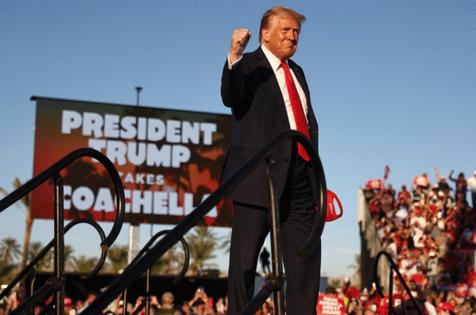
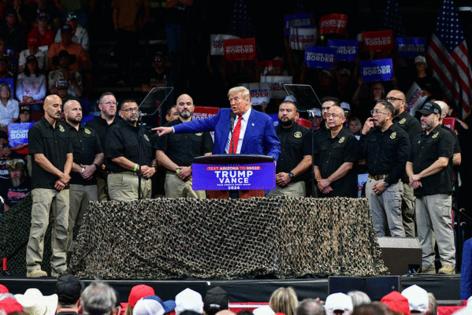
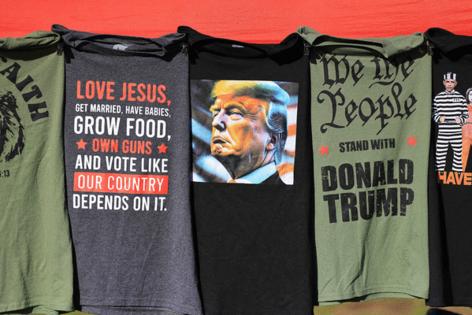





























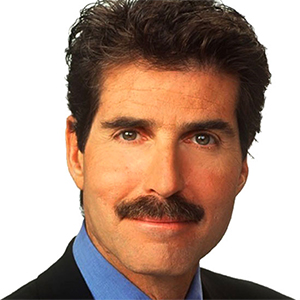
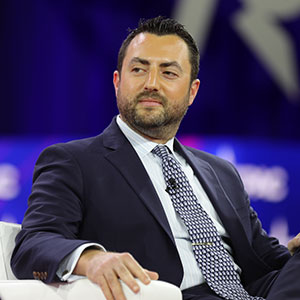



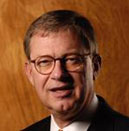







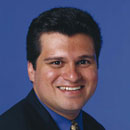



















Comments